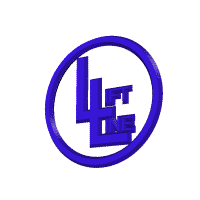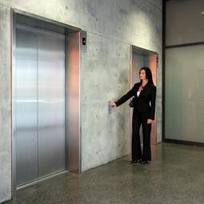

CONTENTS - MENU
How they Work - In Practice
As expected, reality throws up a number of obstacles to confuse and muddy the waters.
The system works providing that the lift installation fully complies with EN81. This will not in many cases be possible, due to limited headroom or pit dimensions, or unsatisfactory power or lighting systems. This is most likely to occur in the replacement of lifts in existing buildings.
Where existing pit depths or headroom dimensions are restricted, the Lift Contractor, even with EN29001, may need to refer to his Notified Body to seek guidance on any additional safety measures necessary for the installation. This could involve additional costs which may not have been known at the time of tender.
Ideally any discrepancies should be tackled by any Notified Body in the same way. At this time this has yet to be substantiated. In effect it should be remembered that the lift installation should be considered as two separate parts: the design and the construction.
A pre-designed lift, i.e. a package or model lift, in accordance with EN29001, must be installed as designed without deviation, addition or alteration of any aspect of the equipment or the environment.
A purpose-designed lift in accordance with EN29001 can reflect any anomalies within the lift environment within reason.
The Notified Body must inspect and approve any designs for which the recognised harmonised standard, i.e. EN81, or the original approved designs are not fully complied with. This is generally not expected to create too much contractual grief as design aspects should be clarified and agreed within the manufacturing and procurement period of the contract before the Contractor even gets to site.
The next link in the chain involves the construction. Both EN29001 and EN29002 accredited companies are assumed to be able to install in strict accordance with the design.
But construction is a team event. What happens if the builder hits problems and the pit is cast 50mm short, or the electrical contractor fails to meet the Lux requirements of the shaft lighting. The installation as a whole may now fail to comply with the required standards through no fault of the Lift Contractor; yet he cannot approve the installation and issue the necessary Declaration.
In effect the Lift Contractor is now responsible for checking works completed by other Contractors which may affect his design and its compliance.
Should any deviation from EN81 be found, at any stage, then the matter should be reported to the Notified Body for judgement. Until the required remedial works are completed, the lift may not be placed into service.
Should the lift company not have a monitored quality system, Final Assessment must be undertaken by the Notified Body as part of the Unit Verification procedure. The lift may not be entered into service until the design and construction aspects have been approved. This may cause severe contractual delays for which the Lift Contractor may be financially liable.
